
6 Important Tips to Showcase Your Technical Skills in the Portfolio the Right Way
Oct 02, 2024 6 Min Read 6331 Views
(Last Updated)
In order to succeed as a developer, you need to have a strong portfolio that showcases your technical skills in the right way.
But it will be quite confusing and daunting at the start. The first question that will come to your mind is, what is the right way to showcase the technical skills in the portfolio?
This article holds the answer to that. You will understand how to showcase your technical skills in the portfolio that can land you your dream job.
So, let us get started without any delay.
Table of contents
- How to Showcase Your Technical Skills in the Portfolio?
- Start With Clarity and Structure
- Highlight Key Projects
- Demonstrate Problem-Solving Skills
- Include Testimonials and Collaborations
- Utilize Multimedia Elements
- Blog About Your Learning Journey
- Conclusion
- FAQs
- Why is it important to have a clear structure in my technical portfolio?
- Can I include group projects in my portfolio?
- How do I choose which testimonials to include in my portfolio?
- Can personal projects be included in my portfolio?
How to Showcase Your Technical Skills in the Portfolio?
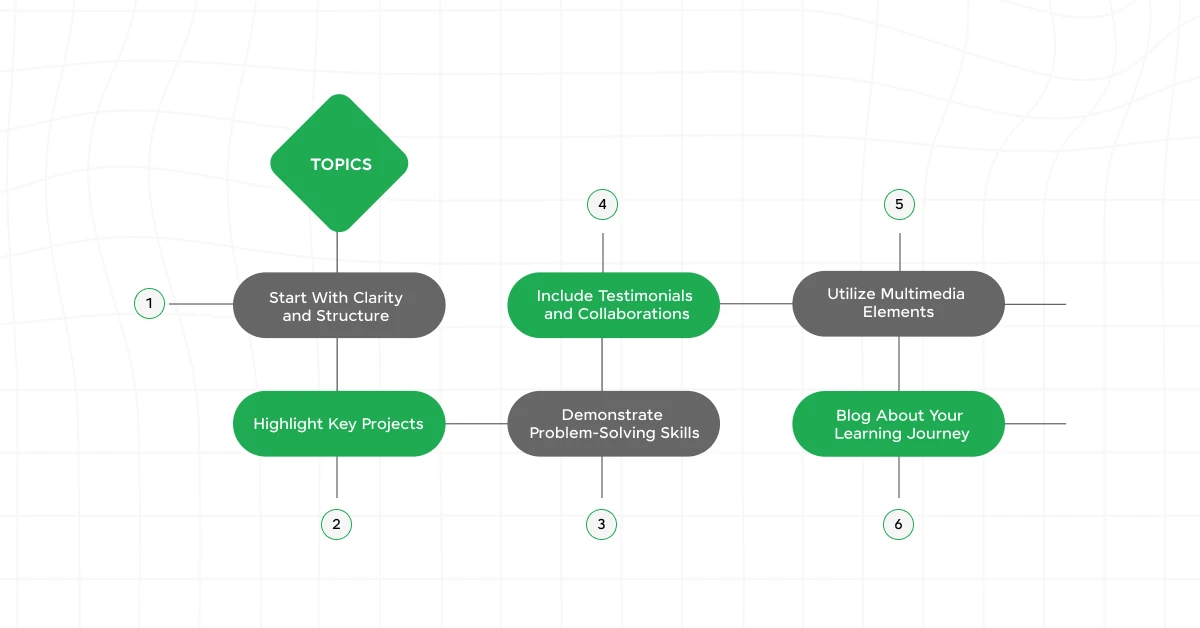
Without any detour, let us directly jump right into our topic and learn how to showcase your technical skills in the portfolio!
Here’s a simple breakdown of the things that you need to take care of when you are showcasing your technical skills in the portfolio:
1. Start With Clarity and Structure

The first thing that you need to keep in mind in order to showcase your technical skills in the portfolio the right way is to capture the attention right from the start with its clarity and structure.
When potential employers or clients first visit your portfolio, you want them to immediately understand who you are, what you do, and how to navigate through your work without any hassle.
Here’s how you can achieve this:
- Design a Clean Layout: The layout of your portfolio sets the first impression. Use a clean, professional design without any clutter that emphasizes simplicity and ease of navigation.
- Organize with Intuitive Navigation: Structuring your content with clear, intuitive navigation helps them find exactly what they’re looking for. Typical sections might include:
- Home
- Projects
- Skills
- Certifications
- Resume
- Use Effective Headers and Tags: Within each section, use headers and tags to direct attention and organize information.
- Showcase Your Best Work First: In your “Projects” section, always start with your strongest and most relevant projects. You want to grab attention immediately and maintain interest.
- Keep it Dynamic: Your portfolio is a dynamic entity and should evolve as you grow professionally. Regular updates are crucial to reflect your latest skills and experiences.
By starting with a clear and well-structured portfolio, you make it easy for potential employers to recognize your technical skills in the portfolio.
Learn More: How to Build a Developer Portfolio That Stands Out in 2024
2. Highlight Key Projects

To showcase your technical skills in the portfolio, the “Projects” section is where you truly get to showcase your skills and achievements. This is your chance to impress potential employers or clients with what you’ve built and how you’ve contributed to meaningful outcomes.
For this, you need to have a basic understanding of full-stack development. If not, consider enrolling for a professionally certified full-stack development course offered by a recognized institution that can help you create more unique projects that’ll boost your portfolio’s outlook.
Here’s how to effectively highlight your key projects to show your technical skills in the portfolio:
1. Select Projects Wisely: Start by selecting a diverse range of projects that showcase different technical skills in the portfolio. You should aim to include projects that:
- Demonstrate your technical expertise
- Showcase problem-solving abilities
- Highlight innovation and creativity
- Reflect team collaboration
2. Provide a Comprehensive Overview: For each project, provide a clear and concise description. Here’s what you should include:
- Project title and date
- Brief description
- Technologies used
- Challenges faced
- Results achieved
3. Visuals and Documentation: Where possible, include visuals like screenshots, diagrams, or videos. Visual elements make the project more tangible and engaging.
If applicable, link to live versions of the application or websites, as well as repositories of your code (e.g., GitHub links).
4. Tell a Story: When detailing your projects, think of it as storytelling. Each project story should articulate the journey of the project from conception to completion, including your personal growth, technical challenges, and professional achievements along the way.
5. Review and Refine: Once you have your projects listed, take a step back and review them as if you were an outsider. Ensure that each project aligns with the career goals you are targeting and reflects the technical skills in the portfolio that are most marketable in your field.
By effectively highlighting key projects, you not only demonstrate your technical skills in the portfolio but also provide a window into your professional personality.
Explore: Hot Topics That You Need To Know In Full Stack Developer Syllabus
3. Demonstrate Problem-Solving Skills

One of the most crucial skills you can showcase in your technical skills in the portfolio is your ability to solve problems.
Employers and clients are not just interested in what technologies you can use, they want to see how you apply those technologies to solve real-world challenges.
Here’s how you can effectively demonstrate your problem-solving skills in your portfolio:
1. Focus on the Process, Not Just the Product: While the end result of a project is important, the process you followed to get there often tells a more compelling story about your technical skills in the portfolio.
When detailing projects, emphasize the steps you took to identify, analyze, and solve problems. This could include:
2. Use Specific Examples: The best way to demonstrate your problem-solving skills is through specific examples. Select projects or situations where your problem-solving skills were critical to the success of the project. This method, often referred to as the STAR technique (Situation, Task, Action, Result), is an effective way to present your problem-solving skills.
3. Include Quantifiable Outcomes: Whenever possible, quantify the results of your problem-solving efforts. For example, if your optimization code reduced the load time of a website by 40%, state this clearly. Such metrics significantly enhance the impact of your narrative.
4. Reflect on Lessons Learned: Problem-solving is as much about learning from the process as it is about finding the solution. Reflect on what you learned from each challenge. What would you do differently next time? What did this problem teach you about technology, teamwork, or your own skills?
This shows that you are not just a problem solver but also a reflective practitioner who is continually learning and growing.
By emphasizing these elements in your portfolio, you demonstrate that you are not just technically proficient but also a strategic thinker and an effective problem solver.
This can set you apart from others in your field, as it shows that you can handle the complexities and challenges of real-world technology environments.
Explore More: Best Ways to Learn Full Stack Development
4. Include Testimonials and Collaborations

Your technical portfolio not only showcases your project and technical skills in the portfolio but also highlights how well you work with others and the impact your work has had on peers, clients, or supervisors.
Including testimonials and detailing collaborations can significantly enhance your portfolio’s credibility and appeal. Here’s how you can effectively incorporate these elements:
1. Testimonials: Testimonials are powerful endorsements that can provide an external perspective on your skills, work ethic, and impact. Here’s how to integrate them effectively:
- Choose wisely
- Keep it relevant
- Ask for permission
- Format Effectively
2. Collaborations: Showcasing projects where you’ve collaborated with others not only demonstrates your technical skills in the portfolio but also your ability to work as part of a team. Here’s how to highlight these experiences:
- Detail your role
- Emphasize team achievements
- Reflect on the process
- Use multimedia
Including testimonials and details about collaborations in your portfolio provides a fuller picture of who you are as a professional and showcases your proficiency in technical skills in the portfolio.
Also Read: Full Stack Developer: Discover the Fastest Route to Becoming One
5. Utilize Multimedia Elements
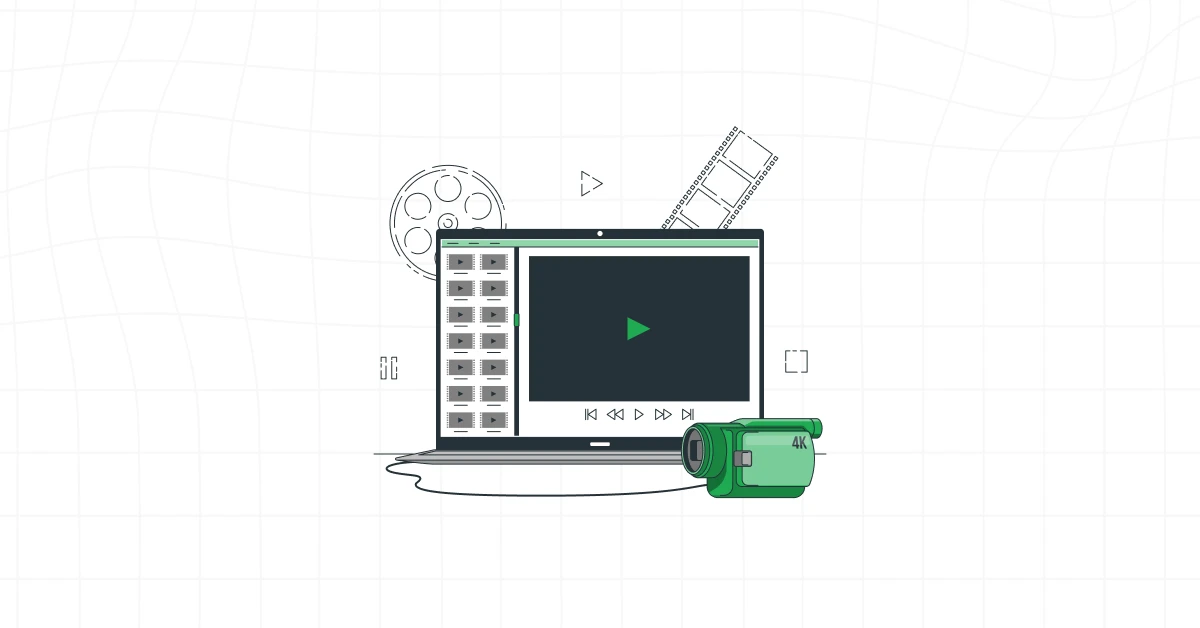
Incorporating multimedia elements into your portfolio can dramatically enhance your outlook on the technical skills in the portfolio.
Multimedia can convey complex information in a digestible and visually appealing way, helping you stand out in a competitive job market. Here’s how you can effectively utilize multimedia elements:
1. Choose the Right Types of Media: The types of multimedia you choose should enhance the story you’re telling about your skills and projects. Consider these options:
- Images and Screenshots
- Videos
- Infographics
- Interactive Demos
2. Ensure Quality and Relevance: Each multimedia element should be of high quality and directly relevant to the content it accompanies. Here’s how to ensure this:
- High Resolution and Professional Quality: Make sure all images and videos are clear, well-lit, and high-resolution.
- Relevance: Every multimedia element should serve a clear purpose and add value to your portfolio.
3. Optimize Multimedia for Web Use: To ensure that your technical skills in the portfolio remain fast and accessible, you need to optimize all multimedia elements:
- Compress Files: Use tools to compress images and videos while maintaining quality. Large files can slow down your portfolio’s loading time.
- Responsive Design: Make sure all multimedia elements display correctly on different devices. This often involves setting proper CSS rules for images and ensuring that video players are responsive.
4. Accessibility Considerations: Making your multimedia accessible to all users, including those with disabilities, is crucial:
- Alt Text for Images: Provide descriptive alt text for all images. This not only helps with SEO but is also crucial for users who rely on screen readers.
- Subtitles for Videos: Include subtitles or captions in your videos. This not only aids viewers who are hard of hearing but also those who might be viewing your portfolio in a noise-sensitive environment.
By thoughtfully incorporating multimedia elements into your portfolio, you not only enhance its visual appeal but also provide a deeper, more engaging user experience that enhances your technical skills in the portfolio.
Also Learn: Best Web Development Projects for All Techies
6. Blog About Your Learning Journey

Adding a blog to showcase your technical skills in the portfolio is a strategic way to showcase your expertise, reflect on your experiences, and engage with a broader professional community.
A blog can serve as a dynamic platform where you share insights, discuss challenges, and highlight continuous learning. Here’s how you can effectively use a blog to enhance your portfolio:
1. Share Your Technical Insights and Projects: A blog allows you to dive deeper into the projects you’ve worked on or the technologies you’re exploring. Each post can focus on specific aspects of a project, such as the challenges you faced, the solutions you implemented, and the technologies you used.
2. Document Your Learning Process: The tech industry is constantly evolving, and showing that you’re keeping up with new trends and technologies is crucial. Use your blog to document what you’re learning, whether it’s a new programming language, a development tool, or a design technique.
3. Offer Industry Insights: Your blog can also be a platform for offering insights about the tech industry. Write about trends you’ve noticed, technologies you believe will become important, or changes in development practices.
4. Engage with the Community: A blog opens up opportunities to engage with other professionals. Encourage comments, ask questions, and respond to feedback. You can also share your blog posts on social media or professional networks like LinkedIn to reach a wider audience.
5. Tips for Effective Blogging: To maximize the impact of your blog, consider these tips:
- Consistency is key: Regular updates keep people coming back and help establish your reputation as a reliable source of information. Aim to post at least once a month, but more frequent posts can increase engagement.
- Quality over quantity: While regular posting is important, the quality of your content is crucial. Ensure that each post is well-researched, clearly written, and provides value to your readers.
- Use multimedia: Incorporate images, charts, and videos into your posts to make them more engaging and easier to understand, especially when explaining complex technical details.
- Optimize for SEO: Use keywords effectively, structure your posts for readability (with headers and subheaders), and include meta descriptions to improve your blog’s visibility on search engines.
- Personal tone: While maintaining professionalism, write in a conversational tone that reflects your personality. This makes your posts more relatable and engaging.
By blogging about your learning journey and industry insights, you not only enhance your technical skills in the portfolio but also build your professional brand.
A blog can make your portfolio more dynamic and interactive, giving potential employers or clients a deeper understanding of your expertise and thought processes.
If you want to learn more about full-stack development, then consider enrolling in
GUVI’s Certified Full-Stack Development Course not only gives you theoretical knowledge but also practical knowledge with the help of real-world projects.
Also Read: How to Create a UI UX Design Portfolio: Top 3 Essential Tips
Conclusion
In conclusion, effectively showcasing your technical skills in the portfolio requires a strategic approach that includes a clear structure, detailed project highlights, demonstrations of problem-solving capabilities, and the integration of testimonials and multimedia elements.
Regular updates and a professional presentation ensure your portfolio remains relevant and engaging. By also incorporating a blog to share your learning journey and industry insights, it will be a dynamic resource that not only displays your technical skills in the portfolio but also your ongoing commitment to professional growth and adaptability.
Must Explore: 10 Innovative Technical Project Ideas for Students to Boost Creativity and Skills
FAQs
1. Why is it important to have a clear structure in my technical portfolio?
A clear structure helps viewers navigate your portfolio easily, ensuring they find relevant information quickly without being overwhelmed.
2. Can I include group projects in my portfolio?
Yes, group projects are great for showing your ability to collaborate effectively. Just be sure to clearly describe your specific role and contributions.
3. How do I choose which testimonials to include in my portfolio?
Select testimonials that are relevant to your technical skills and from individuals who have directly worked with you and can vouch for your contributions and work quality.
4. Can personal projects be included in my portfolio?
Yes, personal projects often show personal initiative and can be very relevant, especially if they demonstrate important skills or a passion for your field.
























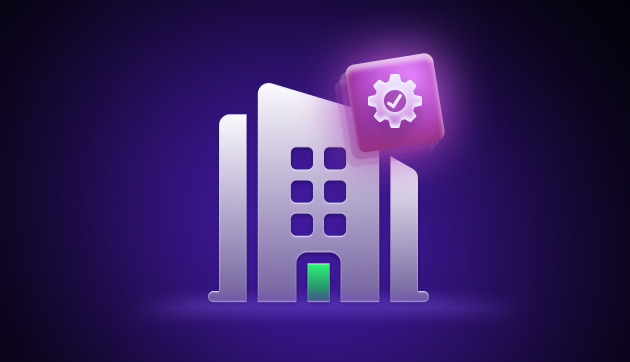
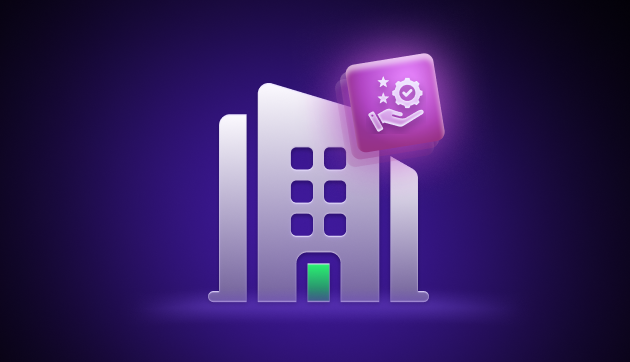
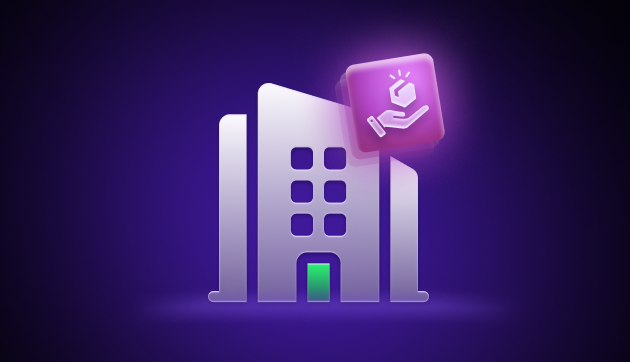

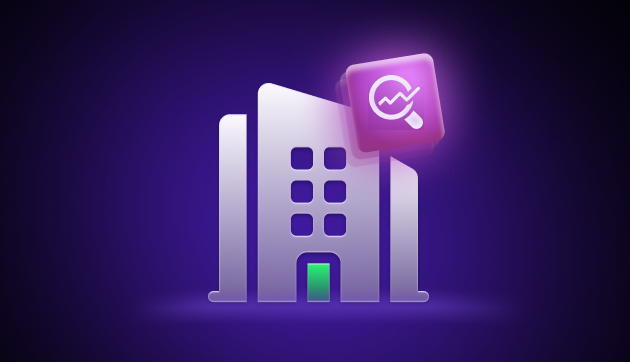



Did you enjoy this article?